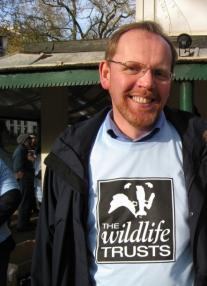Sharing the AEM experience.
 We are trying to collate all the posters and presentations from the AEM so we can put them onto a webpage and everybody can see them. Although we had a record attendance, there are still around 2,700 BSBI members who weren't able to join us at the Natural History Museum, and we don't want anybody to miss out!
We are trying to collate all the posters and presentations from the AEM so we can put them onto a webpage and everybody can see them. Although we had a record attendance, there are still around 2,700 BSBI members who weren't able to join us at the Natural History Museum, and we don't want anybody to miss out! 
 In the meantime, you can read what other members have to say about the AEM on their Blogs. Check out the links in the column on the right, where Waheed, Jonathan and Susanne talk about their exhibits for the AEM. Jonathan's Blog also has a video of his exhibit and another showing his entire presentation at the AEM.
In the meantime, you can read what other members have to say about the AEM on their Blogs. Check out the links in the column on the right, where Waheed, Jonathan and Susanne talk about their exhibits for the AEM. Jonathan's Blog also has a video of his exhibit and another showing his entire presentation at the AEM.And I'm afraid that I muscle in on the act wearing my VC55 hat - the local botany group's Blog mentions the local training opportunities on offer in the vice-county. Waheed's photograph (above) shows two exhibits on botanical training - the VC55 courses and Brenda Harold's on-line botany course, which is proving extremely popular.
 If you are studying botany or plant studies in Britain or Ireland, at whatever level, why not tell us about it? If it's a great course, then other BSBI members will be interested to hear all about it!
If you are studying botany or plant studies in Britain or Ireland, at whatever level, why not tell us about it? If it's a great course, then other BSBI members will be interested to hear all about it! The photographs here were taken by Waheed, Christine and Jonathan of their "Testa yourself" exhibit, where botanists were encouraged to match the seed (or fruit) to the flower.












.jpg)

.jpg)
.jpg)
.jpg)
.jpg)